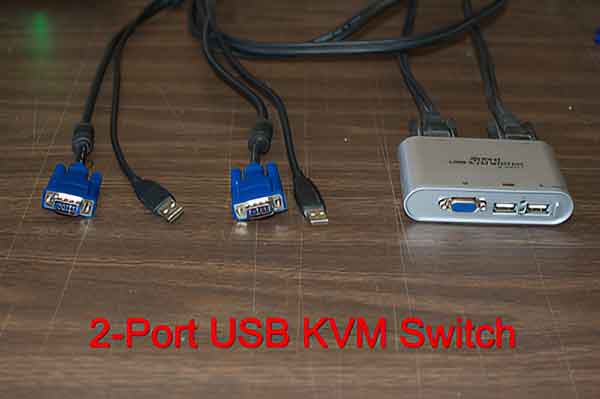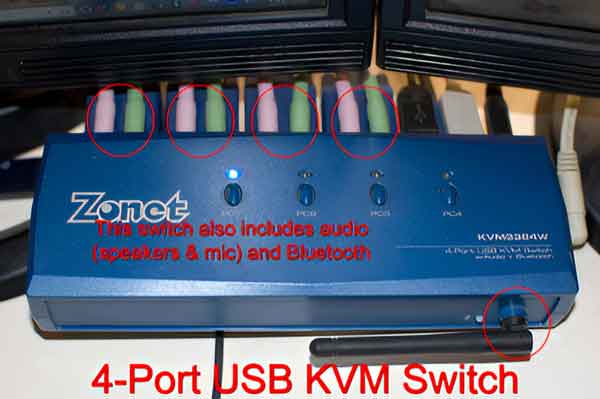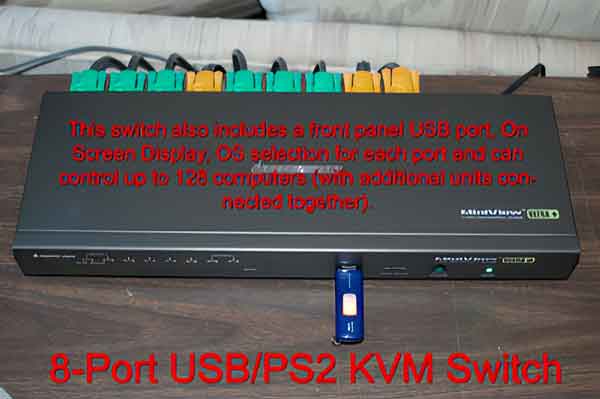In this article, I show some of the advantages of using a KVM (Keyboard Video Mouse) Switch. Besides the obvious reasons of saving space and money when you have multiple computers in one area, you can also get some great built-in features with them.
First, you can get KVM switches with either VGA or DVI video connectors. I know that there are KVM's that have both VGA and DVI connectors, but I prefer VGA KVM's and use a DVI to VGA adapter when needed.

Here is your basic 2-port USB KVM Switch. It costs around $20-25. This type is quite handy when you have a desktop at home, and you use a laptop for work. You can connect the laptop to your full-size monitor, keyboard, and mouse when at home. Also, this unit does not require external power.

Here's a 4-port USB KVM Switch with Audio and Bluetooth. It costs around $40-50. Besides connecting a monitor, keyboard, and mouse, this one also has speaker and microphone jacks. Plus Bluetooth 2.0. This unit does not require external power, but it is an option.

Here's 8-port USB / PS2 KVM with a USB port and On-Screen Display. This KVM is scalable and can control up to 128 computers (with additional switches). Each port can also be configured for the OS of the computer connected to it (Windows, Mac, Sun).
So, If your thinking about getting a KVM, with all the options available, you should be able to find one to fit your needs.
01e43934-ff74-41d2-acdc-cc3ca341e0f2|0|.0|96d5b379-7e1d-4dac-a6ba-1e50db561b04